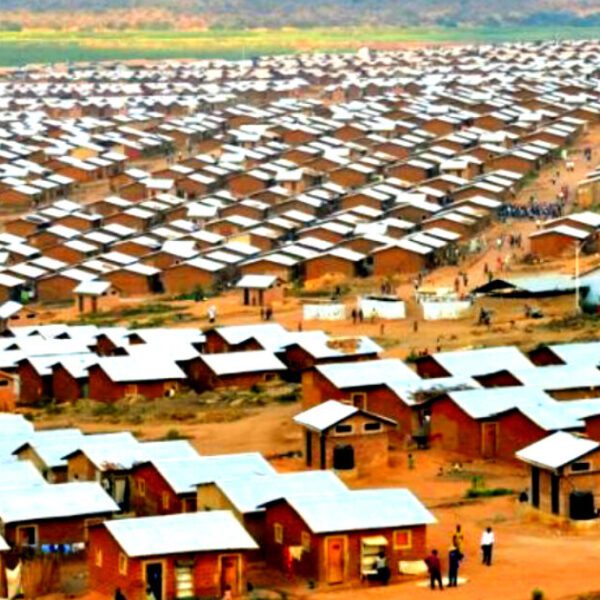

In the U.S. presidential election campaign, cosmetics are used by members of all political parties, even by the Republican nominee for president.
Cosmetics enhance our appearance, boost self-esteem, improve our mood, and keep us healthy. It’s no wonder it’s a big business in the U.S. and globally. Annual toothpaste sales in the U.S. are about $3.9 billion, shampoos, $3.5 billion, deodorants, $4.4 billion, and lip cosmetics, $550 million. The global market for cosmetics used for skin cleansing and beautification was $370 billion in 2023 and is growing. And natural, largely plant-based cosmetics are seeing rocketing demand as consumers increasingly seek eco-friendly and sustainable products.
But change is underway for these products as the planet warms.
For example, natural vanilla, which is used in perfumes and as a fragrance in skincare products comes from Madagascar where rising temperatures, disease outbreaks, and erratic weather patterns are reducing yields and the aroma and flavor of the vanilla beans. Grasse, a town in the south of France often considered the world’s perfume capital, faces increasing heatwaves, droughts, and heavy rainfall, making it more difficult to grow flowers. Droughts have reduced yields for some growers by half. Lavender, grown in France’s Provence region, is facing similar challenges. Scientists have shown that higher temperatures alone reduce floral scents.
Decreasing and endangered populations of honeybees will also have an impact on cosmetics. Honey is increasingly being used in products from lip balms to face masks. And beeswax is used in lipstick to increase its hardness, luster, and applicability. As honeybees face growing pressures from climate change, honey, and beeswax will be harder to come by.
Cloves, used in toothpastes, come mostly from Indonesia, where extreme drought and excessive rainfall threaten the reliability of the spice—and in turn, jeopardize the incomes of farmers.
Cocoa butter, widely used in many skin moisturizers, is derived from the cocoa bean, the source of our chocolate. Most cocoa comes from West Africa, where changing weather patterns are slashing yields contributing to a 350% increase in the price of cocoa butter.
Omega 3, an important skincare ingredient, occurs in tiny plants that form the basis of the food chain in the oceans, but it’s declining as the oceans warm. That deficiency is being passed up the food chain to the fish harvested for fish oil, an excellent source of Omega 3.
Olive oil, used in soaps, face creams, lip balms, shampoos, and massage oils, comes mostly from Spain, where production recently dropped 50% because of record-breaking temperatures and drought. Almost all coconuts, a source of oil for toothpaste and hair care products, are at risk from high temperatures and sea level rise since they are commonly grown in coastal regions.
Wheat, the most important source of food globally, is also widely used in soaps, creams, bath gels, skin care products, and several other products. In the U.S. Midwest, the crop may now face devastating heat waves every six years.
Lastly, there are over a billion shea trees producing nuts, the source of shea butter, which is typically used as a moisturizer. The trees grow naturally over a wide expanse of Africa capturing carbon, providing a landscape for smallholder farms, and serving as a source of income for millions of women. Unfortunately, a growing population, expanding commercial agriculture, and mining are resulting in the loss of about eight million trees a year.
The cosmetic industry contributes to climate change in many ways, from high energy consumption to packaging that is unsustainable, leading to extensive waste headed for landfills. However, cosmetic companies are realizing that climate change is an important issue for their stakeholders, as well as for the health of their business.
Fortunately, there is a path to a more sustainable cosmetic industry that includes adopting climate-resilient farming, making more use of biotechnology, improving packaging, and re-using byproducts from other industries. Let’s hope this leads to a new and more sustainable future for the industry and creates a model for others to follow.
We can also do our part. Nearly 70% of Americans want to see action to tackle climate change. The increasing risk to cosmetics is one more reason for all of us to act. Yet the greatest impediment to action on climate change is the lack of political will.
Electing anyone who won’t accept climate change as a reality will affect the world around us with ever-increasing intensity. Consider this the next time you brush your teeth, shampoo your hair, or apply your favorite lipstick.
More must-read commentary published by Fortune:
The opinions expressed in Fortune.com commentary pieces are solely the views of their authors and do not necessarily reflect the opinions and beliefs of Fortune.














